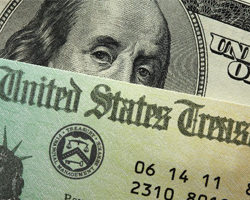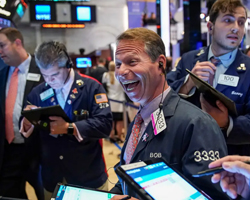Wall Street Wraps Up Turbulent Week as Yields Soar and Fed's Hawkish Outlook Weighs on Markets | Daily Market Analysis
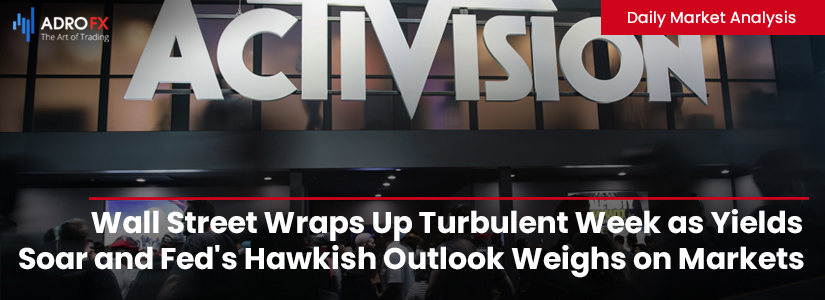
Key events:
- Eurozone - ECB President Lagarde Speaks
- Eurozone - ECB's Schnabel Speaks
On Friday, Wall Street experienced a volatile session that ultimately led to a lower close, marking the end of a turbulent week. This week saw benchmark Treasury yields reaching their highest levels in 16 years, while investors were grappling with the Federal Reserve's more hawkish outlook revisions.
Throughout the session, all three major US stock indices fluctuated before finishing in negative territory. As a result, all three indices recorded weekly losses, with the S&P 500 and the Nasdaq witnessing their most significant Friday-to-Friday percentage declines since March.
Thursday saw a significant development as the S&P 500 dipped below its 100-day moving average, a crucial support level, for the first time since March. Its inability to break above this level suggests that the index continues to face downward pressure.
The Dow Jones Industrial Average dropped by 106.58 points or 0.31%, closing at 33,963.84, while the S&P 500 lost 9.94 points or 0.23%, settling at 4,320.06. The Nasdaq Composite also declined by 12.18 points or 0.09%, closing at 13,211.81.

In other market news, Activision Blizzard (NASDAQ: ATVI) experienced a 1.7% increase in its stock price following a statement from Britain's antitrust regulator. The statement indicated that Microsoft Corp (NASDAQ: MSFT)'s restructured $69 billion acquisition of the company has the potential to receive approval, potentially becoming the largest-ever gaming deal.

On a different note, gold prices experienced a slight decline on Monday, continuing to display weakness after the Federal Reserve's announcement that it intends to maintain higher interest rates for an extended period. The strength of the US dollar and rising yields also contributed to the downward pressure on gold.
Gold has remained in a relatively narrow trading range in recent weeks due to concerns about higher US interest rates, which diminish its attractiveness. The Federal Reserve's recent warning that interest rates could increase further this year, with a smaller-than-expected reduction in 2023, suggests that rates will likely remain above 5%.
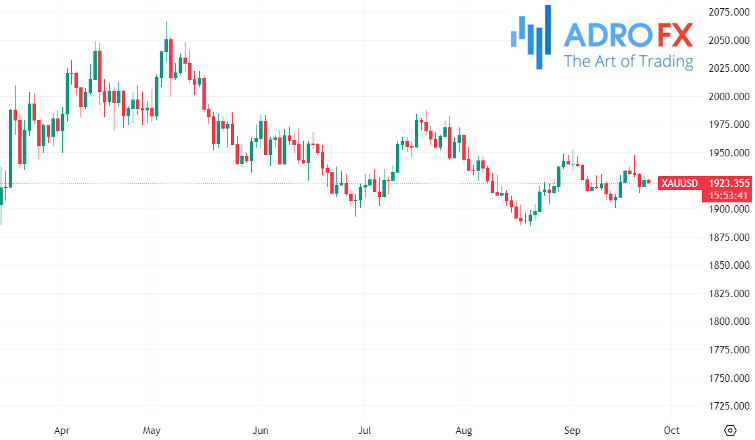
Higher interest rates have a negative impact on gold since they increase the opportunity cost of holding a non-yielding asset like gold. This factor has weighed on gold's performance over the past year and has hindered any substantial recovery in the precious metal.
The Dollar Index reached its highest point since March 2023, closing at 105.55 (compared to 105.40 previously). The impact of the Federal Reserve's recent shift to a more hawkish stance continued to affect currency markets.
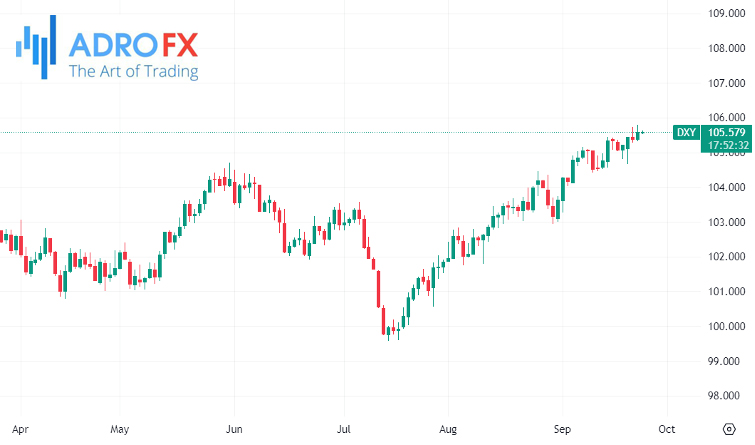
In the context of the Japanese Yen, the US Dollar surged from Friday's 147.58 to 148.35 after the Bank of Japan decided to maintain its ultra-easy monetary policy. The BOJ kept its policy rate unchanged at -0.10%.
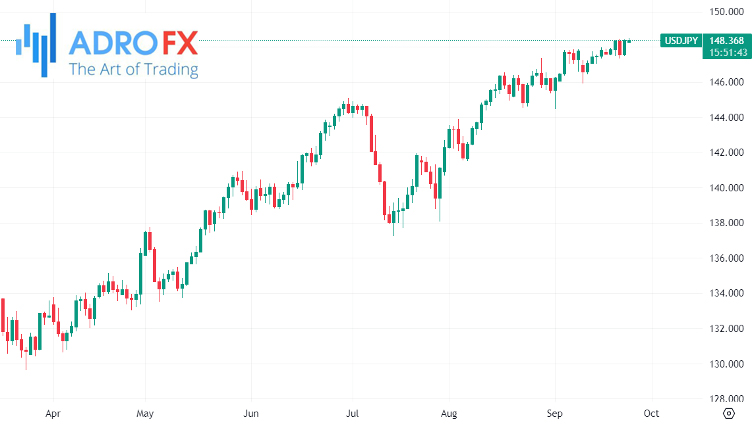
Conversely, the Euro (EUR/USD) experienced a slight decline, slipping from 1.0660 to 1.0655 against the stronger US Dollar. On Friday, the Euro hit an overnight low, nearly reaching a six-month low at 1.0615.

As we look ahead to the coming week, today's economic calendar appears relatively light. In Asia, the RBA's Assistant Governor Bradley Jones, a former IMF banker, is scheduled to deliver a speech.
There are no significant economic data releases expected from Asia today. Germany initiates European data releases with its September IFO Business Climate, forecasted at 85.2 (compared to the previous 85.7 - ACY Finlogix).
Subsequently, the UK follows suit with its UK CBI September Distributive Trades, with a forecast of -23 (compared to the previous -44 - ACY Finlogix).
In the United States, economic releases include the Chicago Fed National Activity Index, forecasted at 0.15 (compared to the previous 0.12 - ACY Finlogix), and the US Dallas Fed Manufacturing Business Index for September, for which there is no forecast available; the previous figure was -17.2.
Additionally, the US will release its July Housing Price Index with a forecast of 0.1% (compared to the previous 0.3%), the US September Consumer Confidence, and the US August New Home Sales, forecasted at 0.7 million (compared to the previous 0.714 million).
